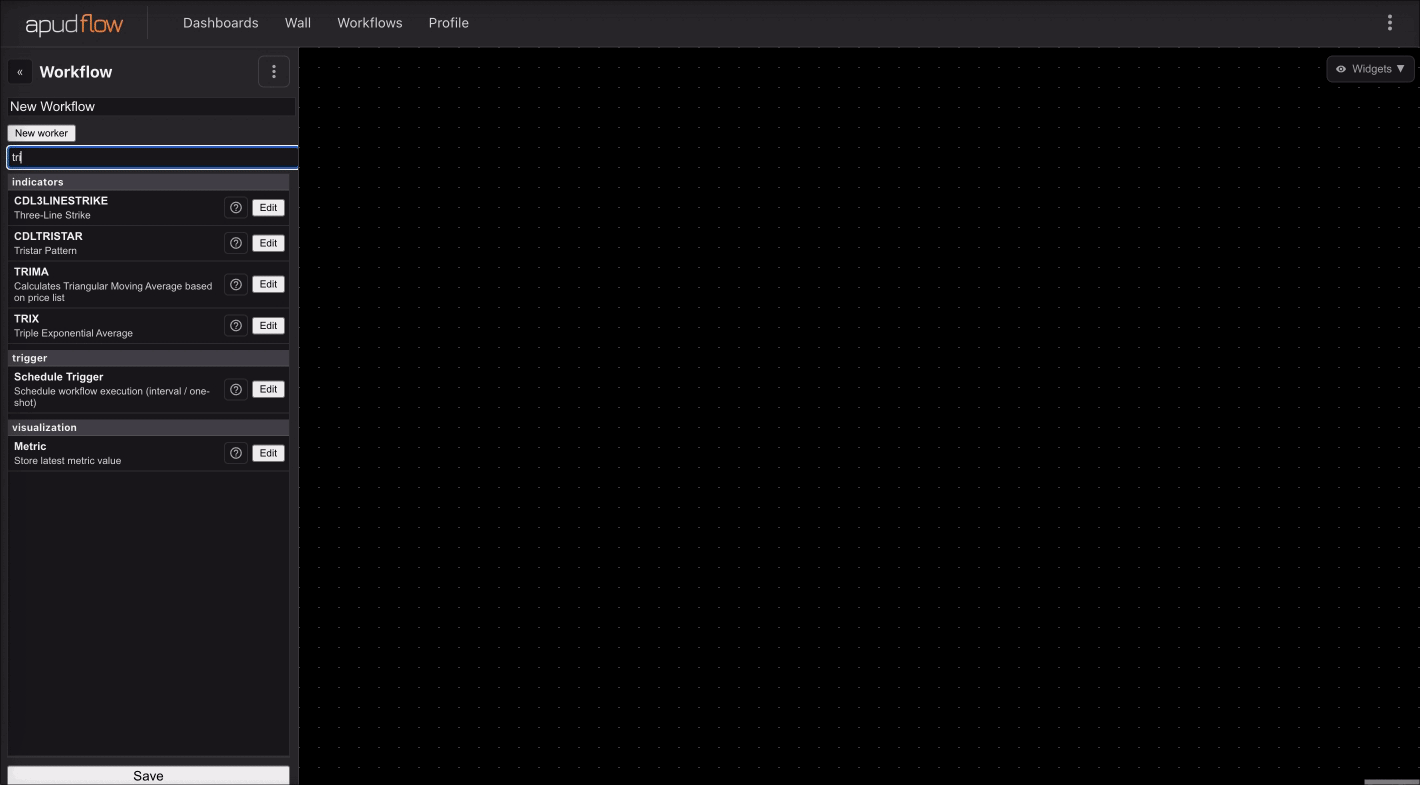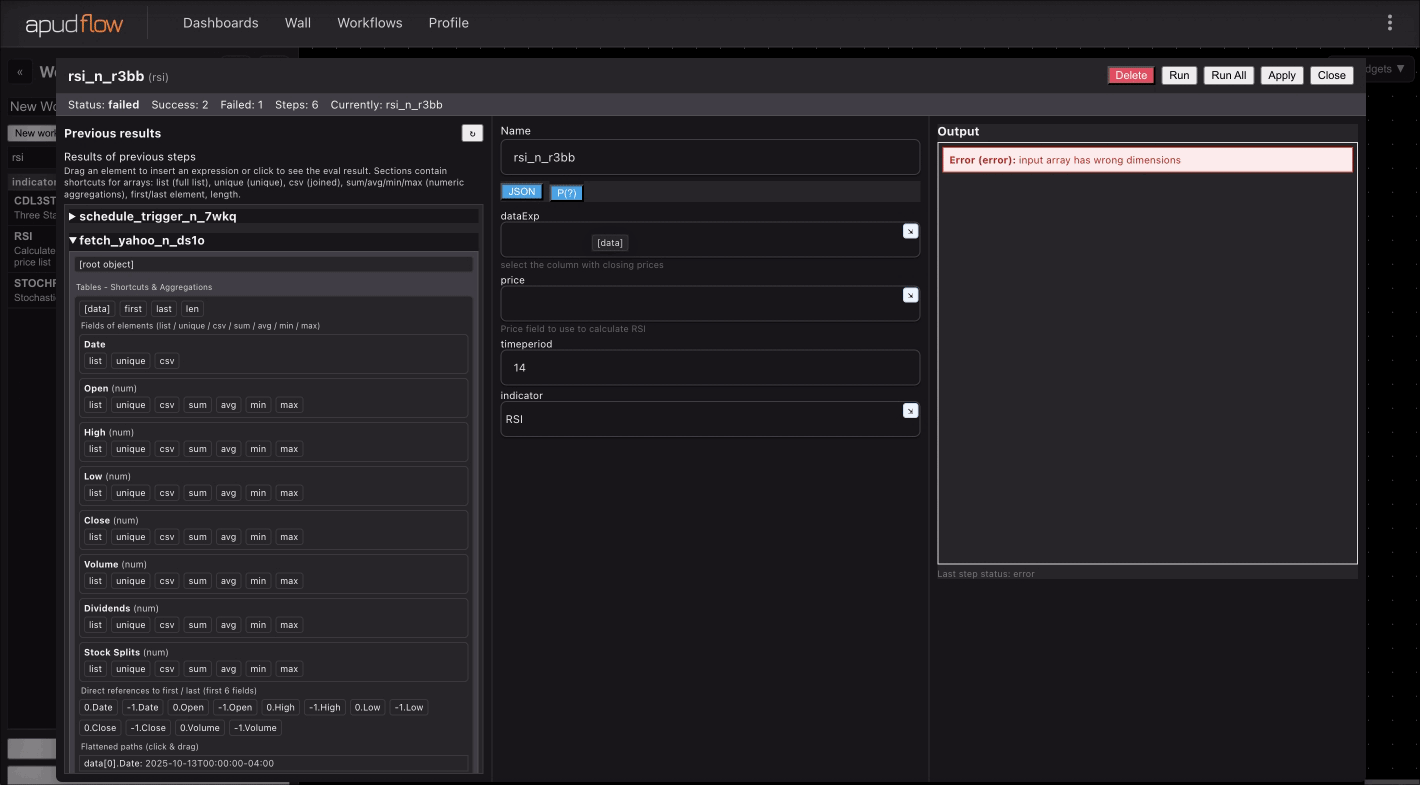DX
Type:
dx• Category:indicators
Description
Directional Movement Index
Parameters
| Name | Type | Description | Required | Default |
|---|---|---|---|---|
dataExp | string | prices data | no | |
high | string | select the column with highest prices | no | |
low | string | select the column with lowest prices | no | |
close | string | select the column with closing prices | no | |
timeperiod | number | Number of periods to use for DX calculation | no | 14 |
Help
DX (Directional Movement Index)
Description
The DX (Directional Movement Index) is a technical indicator used in financial analysis to measure the strength of a trend. It helps traders and analysts determine whether a market is trending or not, and to what extent.
The DX indicator is composed of three main components:
- Plus Directional Indicator (+DI): measures the upward price movement
- Minus Directional Indicator (-DI): measures the downward price movement
- Directional Movement Index (DX): measures the absolute difference between +DI and -DI, normalized by the sum of +DI and -DI.
What does this worker do?
This worker calculates the Directional Movement Index (DX) for a given set of price data. It takes the following parameters:
dataExp: prices datahigh: select the column with highest priceslow: select the column with lowest pricesclose: select the column with closing pricestimeperiod: Number of periods to use for DX calculation
The worker returns the calculated DX values.
How to interpret the results
The DX values range from 0 to 100. A high DX value indicates a strong trend, while a low DX value indicates a weak or absent trend.
- DX > 20: strong trend
- DX < 20: weak or absent trend
The +DI and -DI lines can also be used to generate trading signals:
- +DI > -DI: buy signal
- +DI < -DI: sell signal
Additional Information
The Directional Movement Index (DX) was developed by J. Welles Wilder Jr. and is described in his book "J. Welles Wilder Jr. - ADX, DMI, RSI" .
Usage Example
To use this worker, simply provide the required parameters and run the calculation. The resulting DX values can be used to analyze the trend strength and generate trading signals.
How to use it
For more information on how to use the DX indicator, you can watch the following videos:
[](https://pub-6c7cc7f707d94ca98153d59a039b9a3d.r2.dev/indicator_full.gif)
[](https://pub-6c7cc7f707d94ca98153d59a039b9a3d.r2.dev/indicator_short.gif)